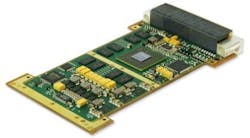JIEDDO asks industry for IED-detection technology to safeguard infantrymen from roadside bombs
The most common switches for buried IEDs are pressure switches and hidden trip wires that detonate the explosive when someone walks on or near them. IED designers use as little metal as possible to avoid detection.
JIEDDO officials are looking for new ways of detecting IEDs or their components, as well as signs of emplacement, such as disturbed earth. JIEDDO officials are looking for three ways of doing this: clearing IEDs from likely threat locations; avoiding IEDs; and using unmanned vehicles or aircraft to detect IEDs hidden in large areas.
JIEDDO wants solutions for these three scenarios, but will give the highest priority to systems that clear IEDs from suspect locations, and help foot soldiers simply avoid IEDs. Officials are especially interested in technologies to help discriminate IED components from clutter.
JIEDDO wants technology to help infantrymen find buried IEDs buried targets at various depths packaged in metallic, low-metallic, and non-metallic containers; in all kinds of terrain; and masked with clutter.
Since soldiers and Marines on foot should be able to carry these systems, solutions should weigh no more than six pounds; offer hands-free operation; and have audio and visual feedback in all modes of operation. Batteries should last for at least six hours, and work together with military chargers and cables.
Potential solutions for unmanned ground vehicles should be reliable at speeds faster than three miles per hour mph over varied terrain, including 10-inch-high obstacles, tall grass, and 20-percent slopes; should work for at least eight hours; be no wider than 24 inches; and weigh no more than six pounds; offer one-hand or hands-free operation.
Companies interested should respond no later than 23 May to the Joint Improvised Explosive Device (IED) Organization, Joint Improvised Explosive Device (IED) Organization, online via the BIDS Website at https://bids.acqcenter.com/JIEDDO. For questions or concerns contact the JIEDDO's Mark Keller by phone at 703-604-3039, or Dick Chladek at 703-602-5476. Also contact the JIEDDO by post at 5000 Army Pentagon, Washington, DC 20310-5000.
More information is online at https://www.fbo.gov/spg/USA/JIEDDO/JIEDDO/JIEDDO_BAA_11-01 /listing.html.

